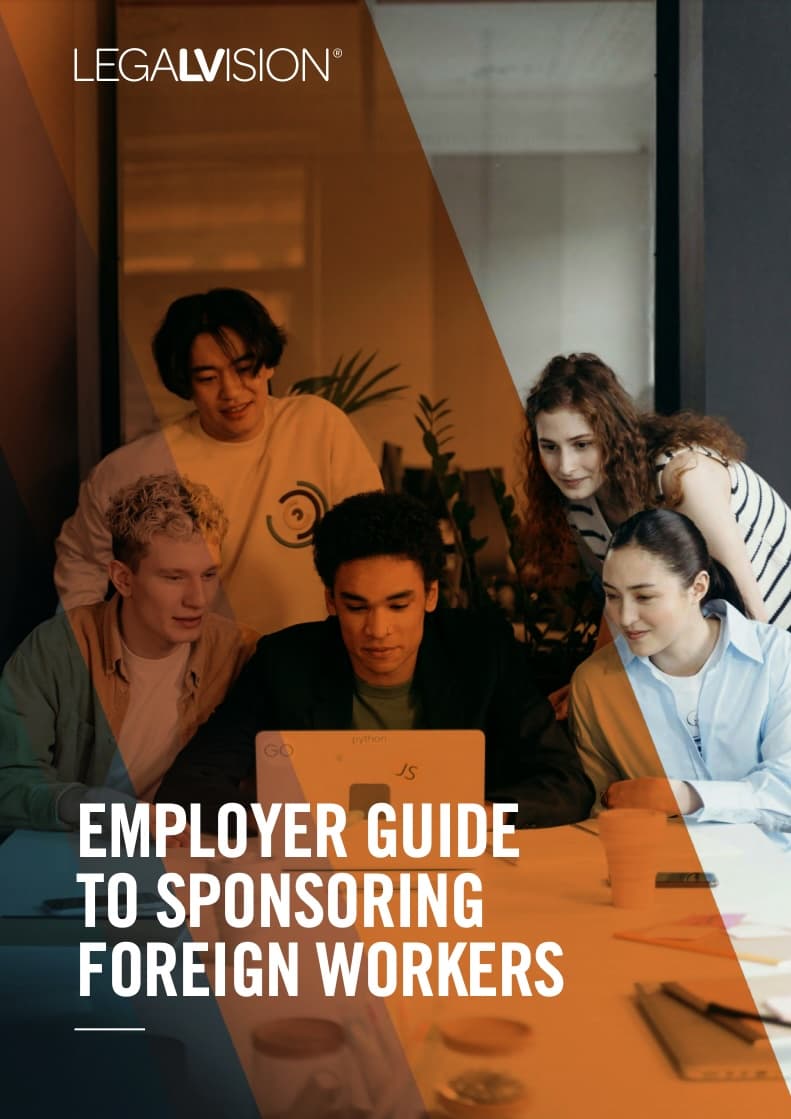In Short
- A Company Specific Labour Agreement allows businesses to sponsor overseas workers when standard visa options do not fit.
- It provides a tailored solution for unique labour needs that can’t be met locally.
- The agreement requires negotiation with the Australian Government and must meet specific criteria.
Tips for Businesses
If your business has unique labour needs, a Company Specific Labour Agreement may allow you to sponsor overseas workers. Make sure you meet eligibility criteria and be prepared to negotiate terms with the government. Seek legal advice to ensure compliance and smooth processing.
Table of Contents
The traditional route of employer sponsorship (via subclass 482) may not be available or suitable for some businesses. An example is when your business needs to sponsor an overseas worker, but the position you wish to fill is not on the relevant skilled occupation list or involves a range of skills under multiple ANZSCO occupations. In these circumstances, your business may consider a labour agreement to sponsor skilled overseas workers rather than the traditional standard business sponsorship pathway. Several labour agreements are available in Australia, including a Company Specific Labour Agreement (CSLA). This option is unique as its approval depends on your business’ specific needs and objectives. Such agreements are assessed on a case-by-case basis. This article will consider when a CSLA would be suitable and the essential eligibility requirements to request this agreement.
When Should My Business Consider a CSLA?
As the name suggests, a CSLA is specific to your business and its terms and conditions. You may consider applying for a CSLA when other avenues are not available, such as when:
- the occupation you want to nominate is not on the skilled occupation list (in respect to subclass 482 or 494);
- no relevant and appropriate industry labour agreement pertains to your business and the nominated occupation; or
- a designated area migration agreement or project agreement is not in place.
In particular, employers requesting a CSLA must make a compelling business case and provide substantive evidence that there is a genuine labour market need to use the labour agreement program.
To request a CSLA, you must submit a request to the Department of Home Affairs (‘the Department’). It usually takes a minimum of six months for the Department to assess the request. However, the Department does not provide any indicative time frame, and the process could take longer. If approved, the CSLA will be in effect for five years. Your business may wish to vary the labour agreement during the five-year period. Here, you must submit a new request (deed of variation) to vary the terms of the agreement.
The key requirements to be eligible to request a CSLA are discussed below.
1. Demonstrate You Have a Genuine Labour Market Need
For the CSLA, you must show that your business genuinely needs an exceptional or niche skill that the Australian labour market cannot fill. For example, you must have made recent and genuine efforts to recruit Australian citizens or permanent residents to fill a position before utilising the labour agreement program.
Evidence of such recruitment efforts should, at a minimum, reflect the labour market testing requirement equivalent to that required for the Temporary Skill Shortage visa (subclass 482) (TSS visa).
You must also ensure you meet the salary and employment conditions equivalent to those required for the TSS visa.
2. Demonstrate You Are Seeking to Fill Skilled Positions
The labour agreement program is not designed for non-skilled workers. You must demonstrate that you are seeking to fill positions for skilled labour. Accordingly, the relevant position must:
- not be an eligible occupation under the TSS visa; and
- be at the Australian and New Zealand Standard Classification of Occupations (ANZSCO) occupation skill level one to four.
In your request, you must identify the relevant ANZSCO code or other industry agreement-specific code for the nominated occupation. You must also supply a detailed job description that outlines the skills and tasks required for the role and how these are consistent with the corresponding ANZSCO code.
In addition, the proposed skilled worker must:
- have at least two years of relevant work experience;
- meet the skill requirements outlined in the relevant ANZSCO code for that occupation;
- meet any industry registration or licensing requirements; and
- meet the English language requirements of the short-term stream of the TSS visa.
Concessions to Standard Eligibility Requirements
You must present a strong business case for requesting concessions to the standard visa eligibility criteria. For TSS (subclass 482) and SESR (subclass 494) visas, you can request concessions for English language, salary and work experience requirements in the company-specific labour agreement. Similarly, for ENS (subclass 186), an age concession may be requested.
3. Demonstrate Your Workforce Needs
The CSLA is expected to be a temporary solution only to address immediate skill needs and shortages. As a result, you must show that:
- the overseas workers will not form more than one-third of your total workforce; and
- you have a plan to train and employ Australians to avoid needing a labour agreement in the future.
The labour agreement is designed for foreign workers to supplement existing Australian employees, and you will need to demonstrate that the foreign workers will not undermine employment or training opportunities for Australian workers.
4. Consult Industry Stakeholders
Before requesting a CSLA, you must consult all relevant industry stakeholders. These may include:
- the industry body that best represents your interests;
- the union relevant to the occupation requests; and
- any community group the proposed labour agreement may impact, such as schools or health services.
You will also need to provide these stakeholders with specific information about the agreement, including:
- the number of overseas workers in each year of the agreement and their occupations;
- the location of their workplace;
- the proposed salary, relevant awards and how you determined this amount;
- any concessions you seek to the program; and
- details of training for your Australian workforce to reduce your reliance on overseas workers.
You should provide evidence of the outcomes of stakeholder consultations, including copies of all written requests for comment on the proposed CSLA alongside the responses.
5. Be an Australian Business With Good Standing
You must demonstrate that you are a registered Australian business with good standing. This involves proving that your business is:
- lawful and operating in Australia for at least twelve months; and
- financially viable and able to support the employing overseas workers.
There must also be no ‘adverse information’ about your business unless the Department considers it reasonable to disregard.
Examples of this include where the business:
- has broken the law in Australia;
- is under investigation for breaking such a law by an appropriate authority;
- is insolvent; or
- has provided false or misleading information to any appropriate authority (e.g. the Department) at any time.
If any of these apply to you, you should ensure that you disclose any adverse information in your request. Additionally, you must explain why you believe the Department should disregard this information.

Sponsoring overseas workers as an Australian business is complicated. Let us simplify it for you with this free employer guide.
Key Takeaways
A Company Specific Labour Agreement (CSLA) is developed between the Australian government and a specific business. As each request is considered on a case-by-case basis, the business must prepare a detailed and persuasive business case that addresses the following:
- the nature of the business and its activity;
- the genuine need for the CSLA and the nominated occupation;
- consultation with relevant industry stakeholders;
- efforts to recruit Australians to fill the position and reasons for not being able to;
- benefits of CSLA to the business and impact to the business if CSLA is not approved; and
- the skills that the foreign worker will have to occupy the nominated position.
Notably, the above is not an exhaustive list.
If you need help with a labour agreement, our experienced immigration lawyers can assist as part of our LegalVision membership. For a low monthly fee, you will have unlimited access to lawyers to answer your questions and draft and review your documents. Call us today on 1300 544 755 or visit our membership page.
Continue reading this article below the formFrequently Asked Questions
A Company Specific Labour Agreement (CSLA) is an agreement between the Australian government and a specific employer containing tailored terms and conditions to enable the company to employ foreign workers.
You may be eligible to obtain a CSLA if the occupation you wish to nominate is not on the skilled occupation list for 482 or 494 visas. Additionally, you must be ineligible for an industry labour agreement. Furthermore, a designated area migration agreement or project agreement should not be in place for you. You will need to provide a business case demonstrating your needs and suitability for this arrangement.
Industry Labour Agreements are arrangements designed for a specific industry with fixed, non-negotiable terms and conditions. For the Department to consider an industry labour agreement, several businesses in that industry must approach them, demonstrating ongoing labour shortages and extensive consultation within the industry.
We appreciate your feedback – your submission has been successfully received.











